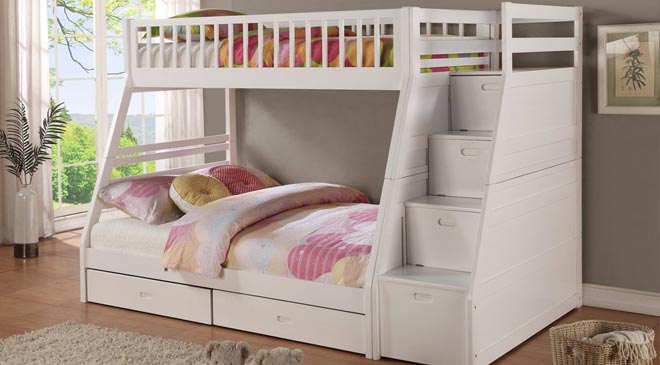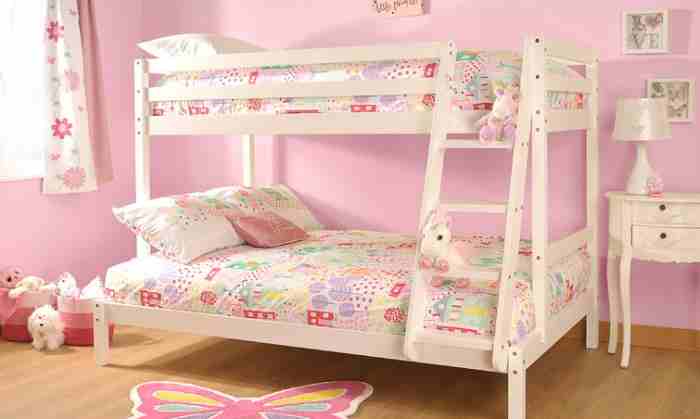The bunk bed was a clever invention that ensured that one could do all they desired in the bedroom, even when there was scarcity of space in this precious room. It continues to find purpose in many bedrooms today, most especially in kids’ bedrooms. Bunk beds are built around the traditional function of the bunk bed, which is to provide multiple sleeping spaces and extra storage or expand sleeping space vertically while sparing floor space for a different task like studying or working at a desk. While bunk beds are ideal for use in children’s and teens’ rooms, they can also find use in adult bedrooms, provided the adults occupying the bedroom are open to the idea of using a bunk bed. And with the contemporary designs these beds come in today, it won’t even feel like a bunk when you plop yourself on it.
Bunk beds come in multiple types, some more common than others. The standard bunk bed is the most common design of bunk bed, and features either a twin bed over a twin bed, twin bed over a full size bed or a single bed over a double bed. Loft beds are also a type of bunk bed, where instead of having a lower bed, the space beneath the upper bed is left open and fitted with either storage or a work/study desk. It can also serve as your child’s play area. Futon bunks are another type of bunk bed that you can consider. They feature an upper bed and a futon on the lower bunk, which can be converted into a lounge area/sofa at will. Trundle bunk beds combine a double decker and trundle to create enough sleeping space for three. A study bunk is another contemporary concept that works great in bedrooms with limited space and where the owners would like a workspace incorporated. The bunk is framed as a complete workspace, complete with desk, space for chair and full size cabinetry. On top of this office space lies the bed, which is easily accessed via steps leading to the top bunk.
Bunk beds are broadly made from wood or metal, with wood being the most commonly used material of the two. Both materials are easy to care for and maintain, considering that the bunk is polished off using one of various modern finishes to make maintenance easy and preserve the material. Once you decide which of the two materials you prefer, choose the size you want your bunk to be in. This includes both width and length as they directly impact how much floor space the bed occupies, as well as height. Always maintain some distance between the upper bed and the ceiling, no matter how low the ceiling is. This will help prevent the bed occupants from bumping into the ceiling. If the bunk will be used by children, ensure that all safety features like steps, ladders, and rails are in place, and firmly so. As an extra precaution, choose low bunks for the younger children and higher inks for older children, who won’t have trouble climbing higher to access the upper bed.
Bunk beds are versatile enough for use by people of different ages. They come in different types, designs and sizes, and are readily accessible in the leading bedroom furniture stores near your home.


